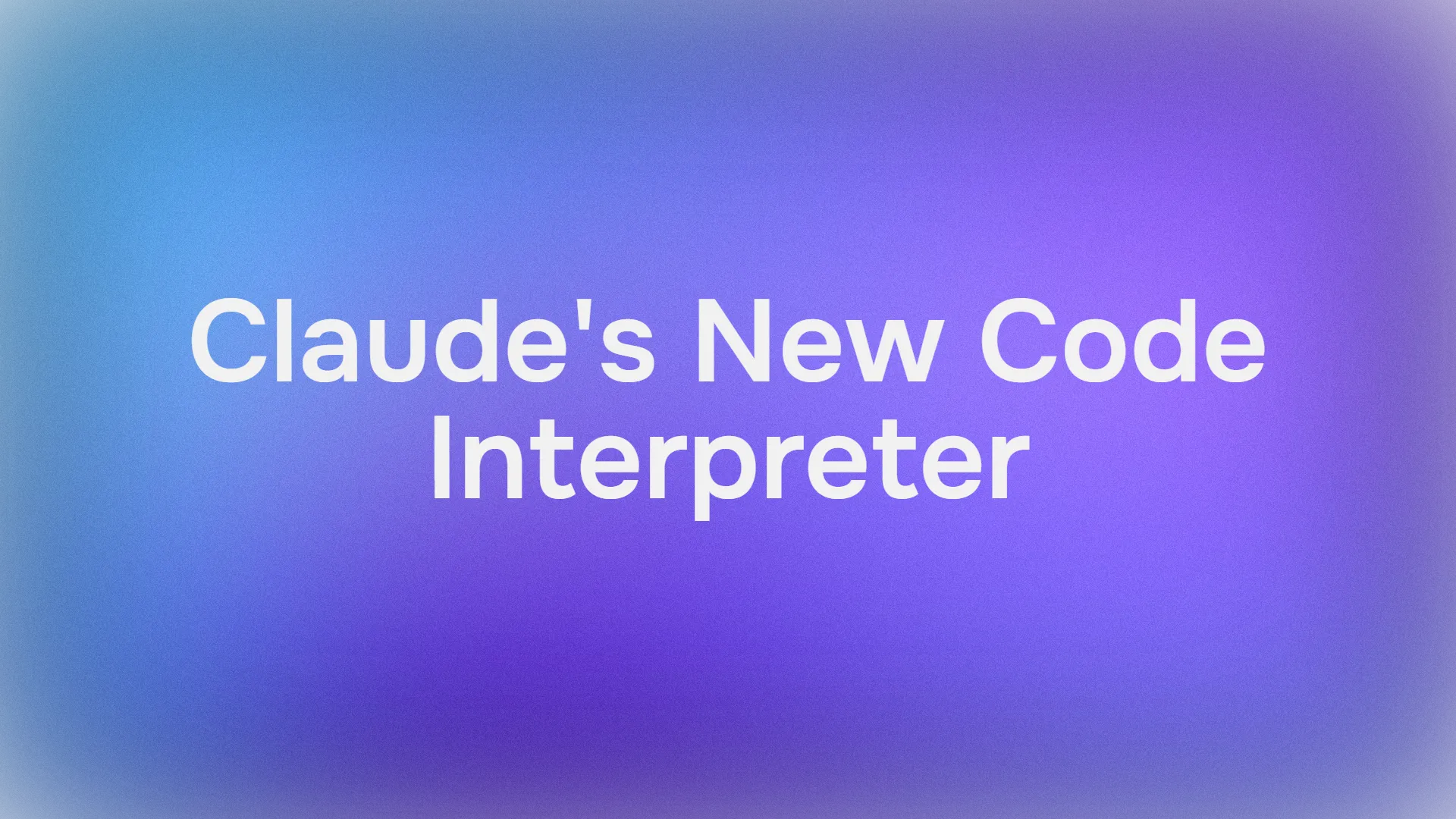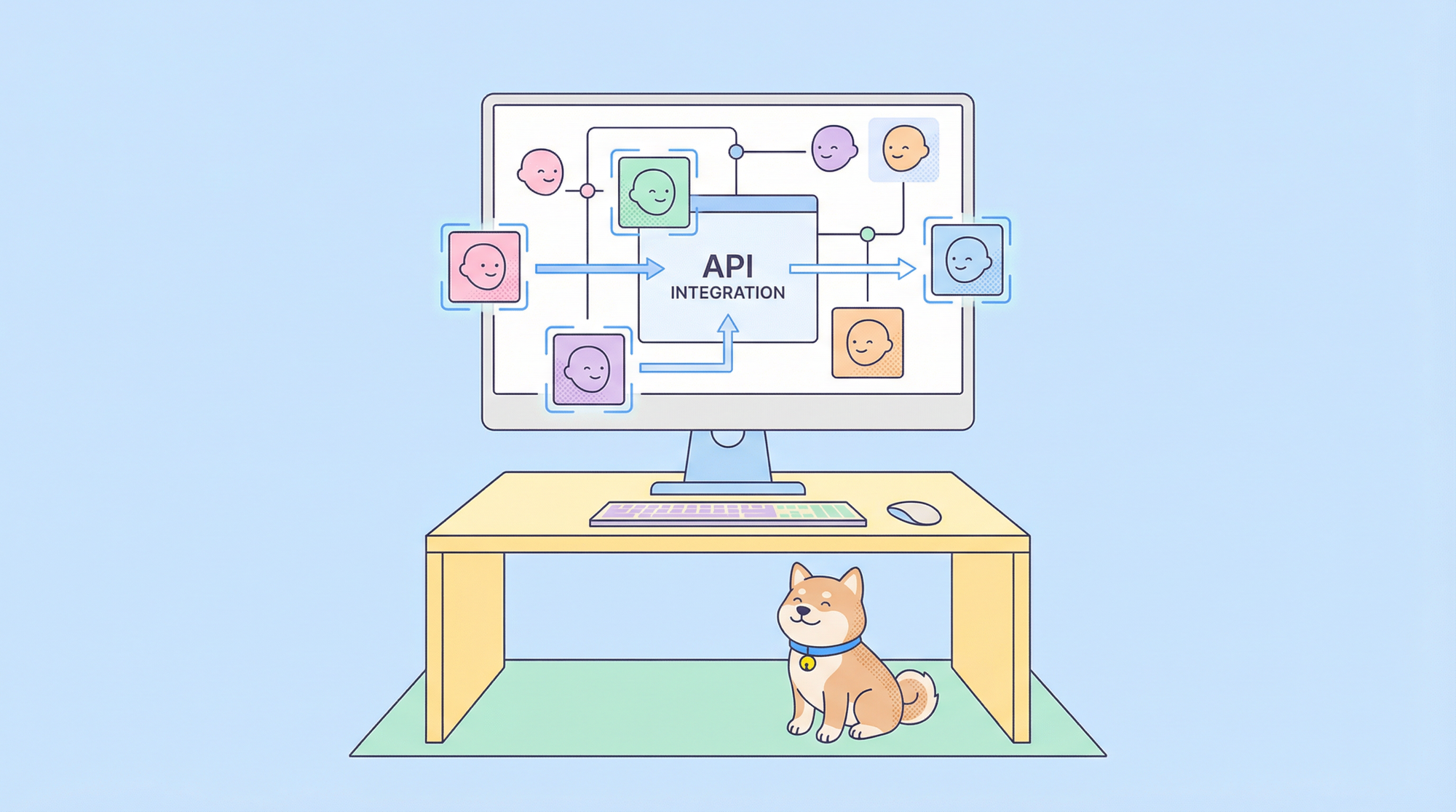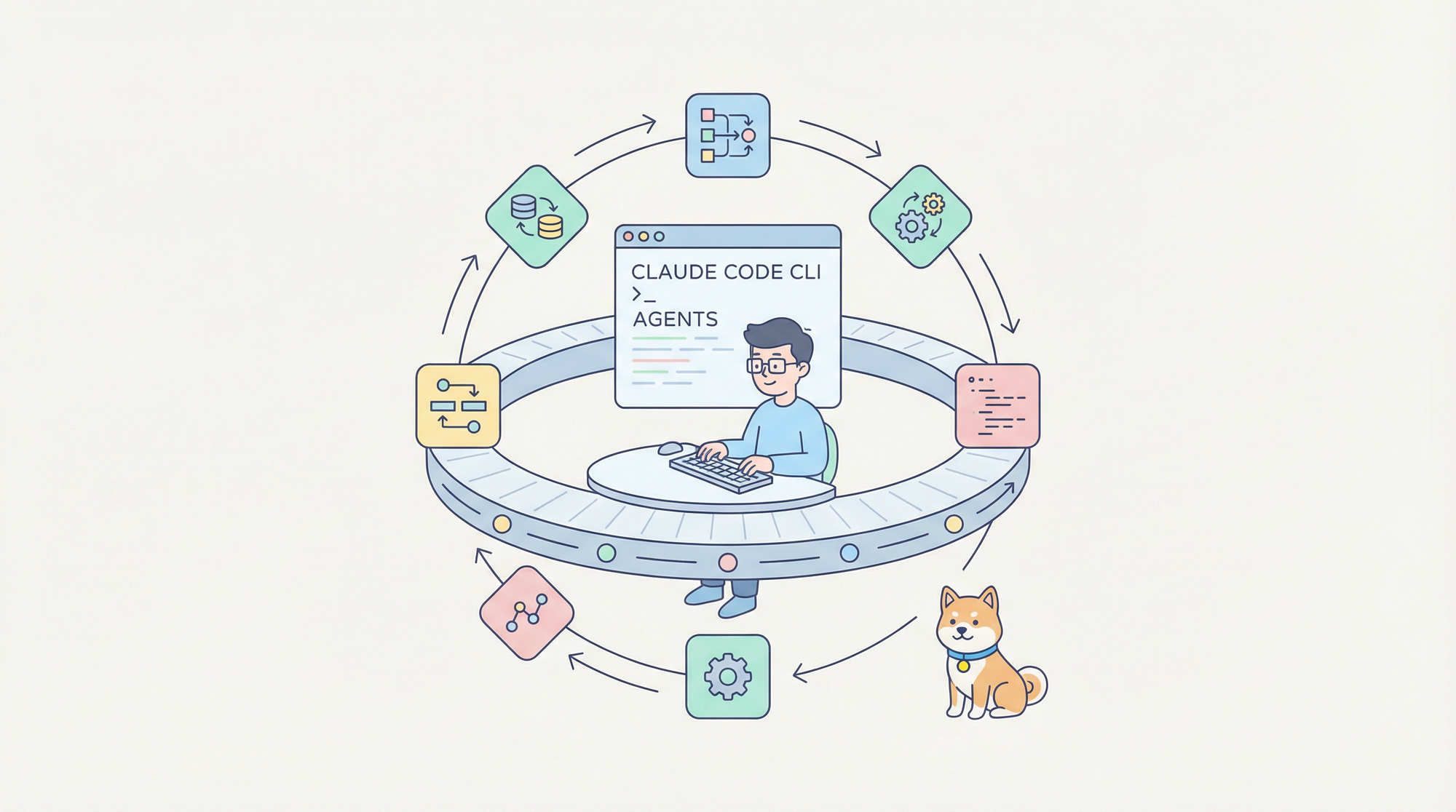As AI tools grow smarter and more versatile, Claude’s new Code Interpreter arrives as a powerful addition to the landscape. This isn’t just another update from Anthropic—it’s a massive leap forward, transforming Claude into a powerhouse for developers, data scientists, and anyone who loves crunching code or manipulating files. Dubbed the “Upgraded file creation and analysis” feature (yes, the name’s a bit clunky), Claude’s new Code Interpreter replaces the older “Analysis Tool” with a server-side sandbox that can create, edit, and analyze everything from Excel spreadsheets to PDFs, while running custom Python and Node.js code. Think of it as Claude stepping up to rival OpenAI’s ChatGPT Code Interpreter, but with its own unique flair, like Node.js pre-installed and the ability to install Python packages on demand. In this guide, we’ll unpack what makes Claude’s new Code Interpreter so special, how it works, its practical uses, and what to watch out for. Let’s dive into why this tool is a must-try for anyone coding with Claude.
Want an integrated, All-in-One platform for your Developer Team to work together with maximum productivity?
Apidog delivers all your demands, and replaces Postman at a much more affordable price!
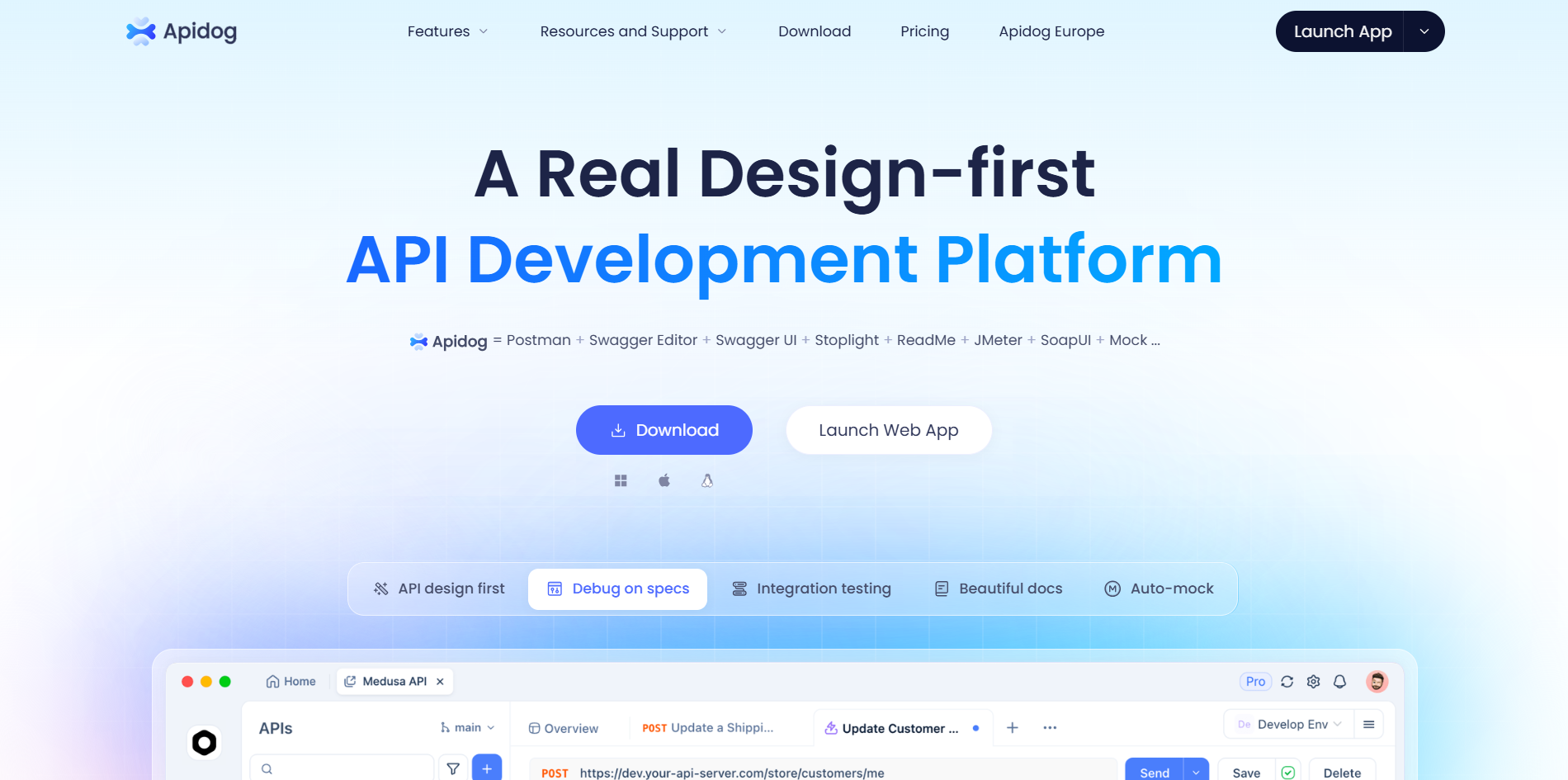
Introduction to Claude’s Code Interpreter
Claude’s new Code Interpreter, announced in 2025, is a significant upgrade that takes Claude from a conversational AI to a full-fledged coding and data analysis partner. Officially called “Upgraded file creation and analysis,” it replaces the earlier “Analysis Tool” that ran JavaScript in your browser. Now, Claude operates in a server-side sandbox, allowing it to create, edit, and analyze complex files like Excel spreadsheets, PowerPoint decks, PDFs, and documents directly within Claude.ai or the desktop app. This feature is currently in preview for Max, Team, and Enterprise users, with Pro users expected to get access soon. Unlike its predecessor, which was limited to browser-based execution, Claude’s new Code Interpreter brings robust capabilities, making it a direct competitor to tools like ChatGPT’s Code Interpreter, but with some distinct advantages we’ll explore below.
Technical Environment and Capabilities
So, what’s under the hood of Claude’s new Code Interpreter? It runs in a secure, server-side Ubuntu 24.04.2 environment with 9GB of RAM and about 5GB of disk space—plenty of muscle for most tasks. It comes preloaded with Python 3.12.3 and Node.js 18.19.1, giving Claude the ability to execute code in both languages. One standout feature? You can install additional Python packages via pip on demand, which is a big win for data scientists needing specific libraries like pandas or matplotlib. The environment is a sandboxed container, isolated from client machines, ensuring security while letting Claude manipulate data and generate files like PNG visualizations or PDFs.
Unlike ChatGPT’s Code Interpreter, Claude’s new Code Interpreter has limited internet access, but it can fetch web content through external containers with proxies and allow lists. This makes it slightly more restrictive but still powerful for tasks like pulling public datasets or generating reports. File upload and download limits are set at 30MB per file—smaller than ChatGPT’s 512MB cap—but sufficient for most spreadsheets, documents, or visualizations. These technical specs make Claude’s new Code Interpreter a versatile tool for coding and data analysis.
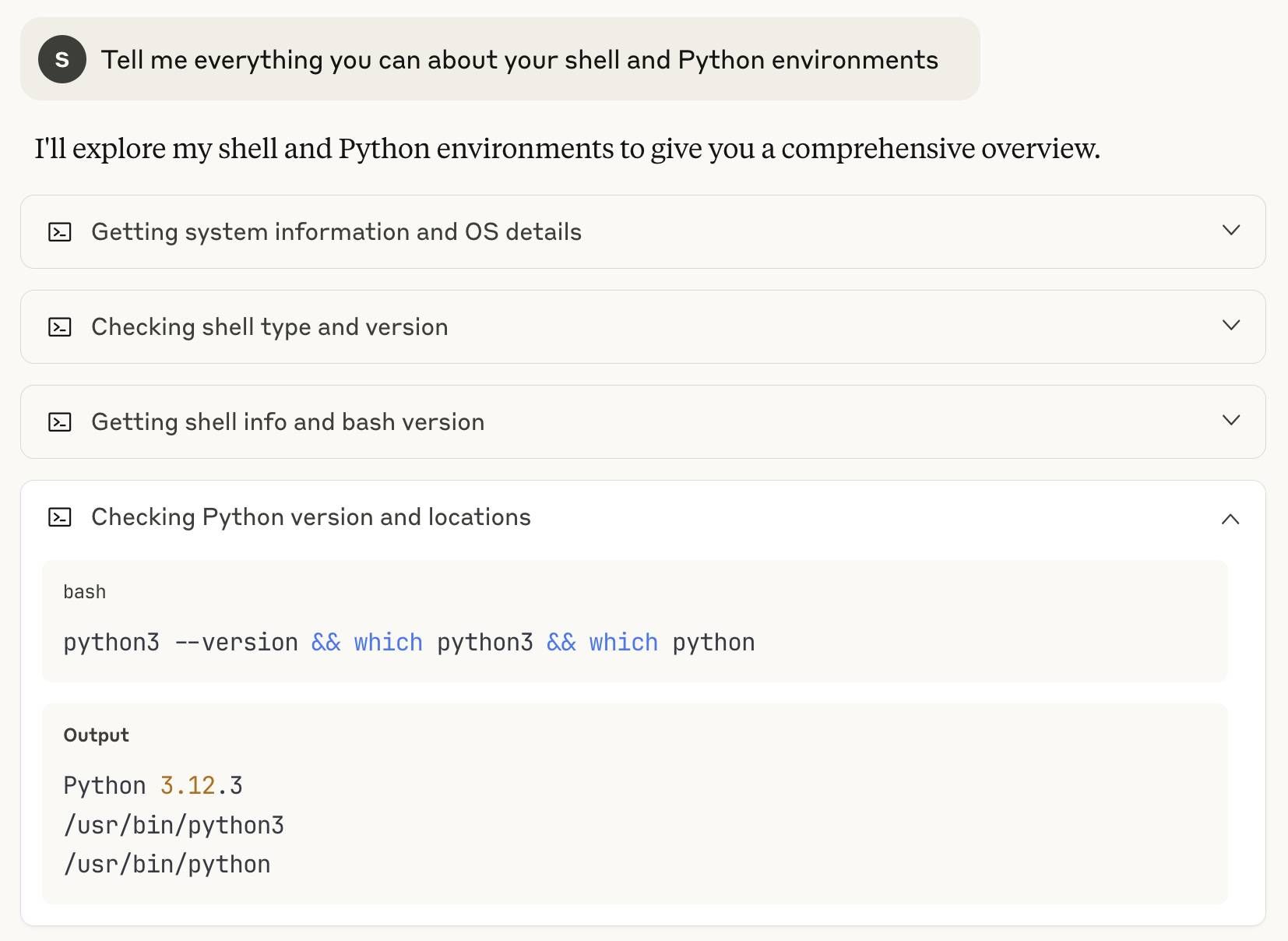
Functional Highlights
What can you actually do with Claude’s new Code Interpreter? A ton! Here are the highlights:
- File Manipulation: Create, edit, and analyze files like Excel spreadsheets, PowerPoint slides, PDFs, and documents. Need to generate a report from raw data? Claude can whip up a polished PDF or chart in minutes.
- Code Execution: Run custom Python or Node.js code in the sandbox. Whether it’s crunching numbers with Python or scripting with Node.js, Claude handles it seamlessly.
- Package Installation: Install Python packages on the fly via
pip. Want to useseabornfor a fancy visualization? Just tell Claude to install it. - Data Visualization: Generate PNGs or other visual outputs for data analysis. For example, Claude can take a CSV and churn out a bar chart or heatmap.
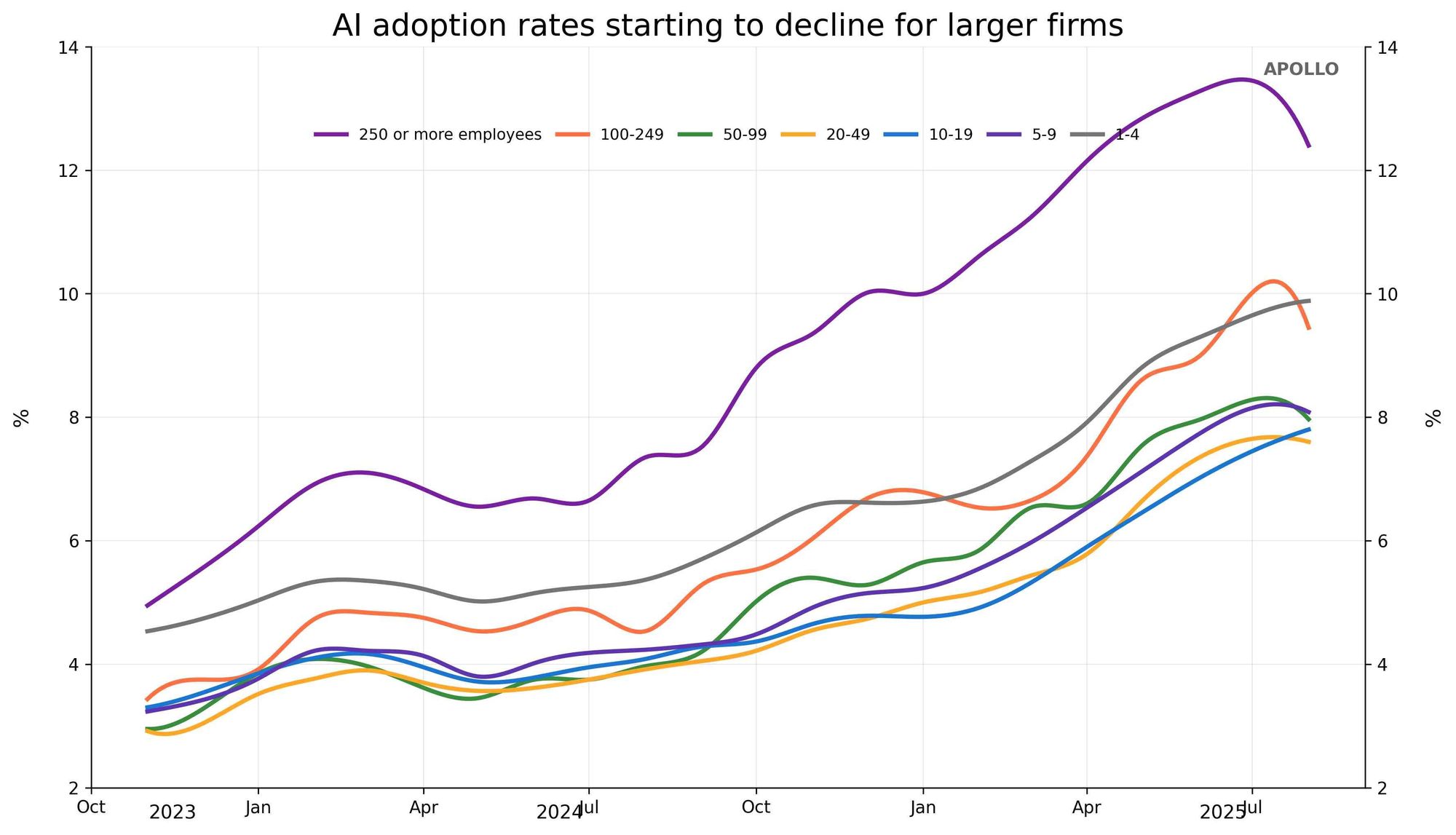
These capabilities make Claude’s new Code Interpreter a Swiss Army knife for developers and analysts, streamlining tasks that would otherwise require multiple tools.
Practical Use Cases and Examples
The real magic of Claude’s new Code Interpreter shines in its practical applications. Take data analysis: one demo showed Claude recreating a complex AI adoption rate chart from Apollo’s spreadsheet data, complete with a PNG output. Imagine uploading a CSV of sales figures and asking Claude to generate a trend graph or a formatted report—it’s that easy. Another use case is iterative code refinement. You can write a Python script, test it in the sandbox, and have Claude suggest optimizations or debug errors. For example, ask Claude to analyze a dataset and generate a PowerPoint slide summarizing key insights, and it’ll handle the heavy lifting.
It’s also great for rapid prototyping. Need to test a Node.js script for a microservice? Run it in Claude’s new Code Interpreter, tweak it based on output, and export the results. These use cases make Claude a go-to for developers and data teams looking to save time and boost productivity.
Testing with Apidog
Before diving headfirst into projects with Claude’s new Code Interpreter, it’s wise to test your API endpoints, especially if you’re integrating external data sources or custom scripts. Apidog, a versatile API testing tool, is perfect for this. Download it from apidog.com/download or use the web version. Create a project, add the endpoints you’re working with (e.g., for fetching web content), and test requests to ensure they’re compatible with Claude’s new Code Interpreter. Apidog lets you verify response schemas, status codes, and data formats, catching issues before they derail your workflow. This step ensures your projects run smoothly in Claude’s sandbox environment.
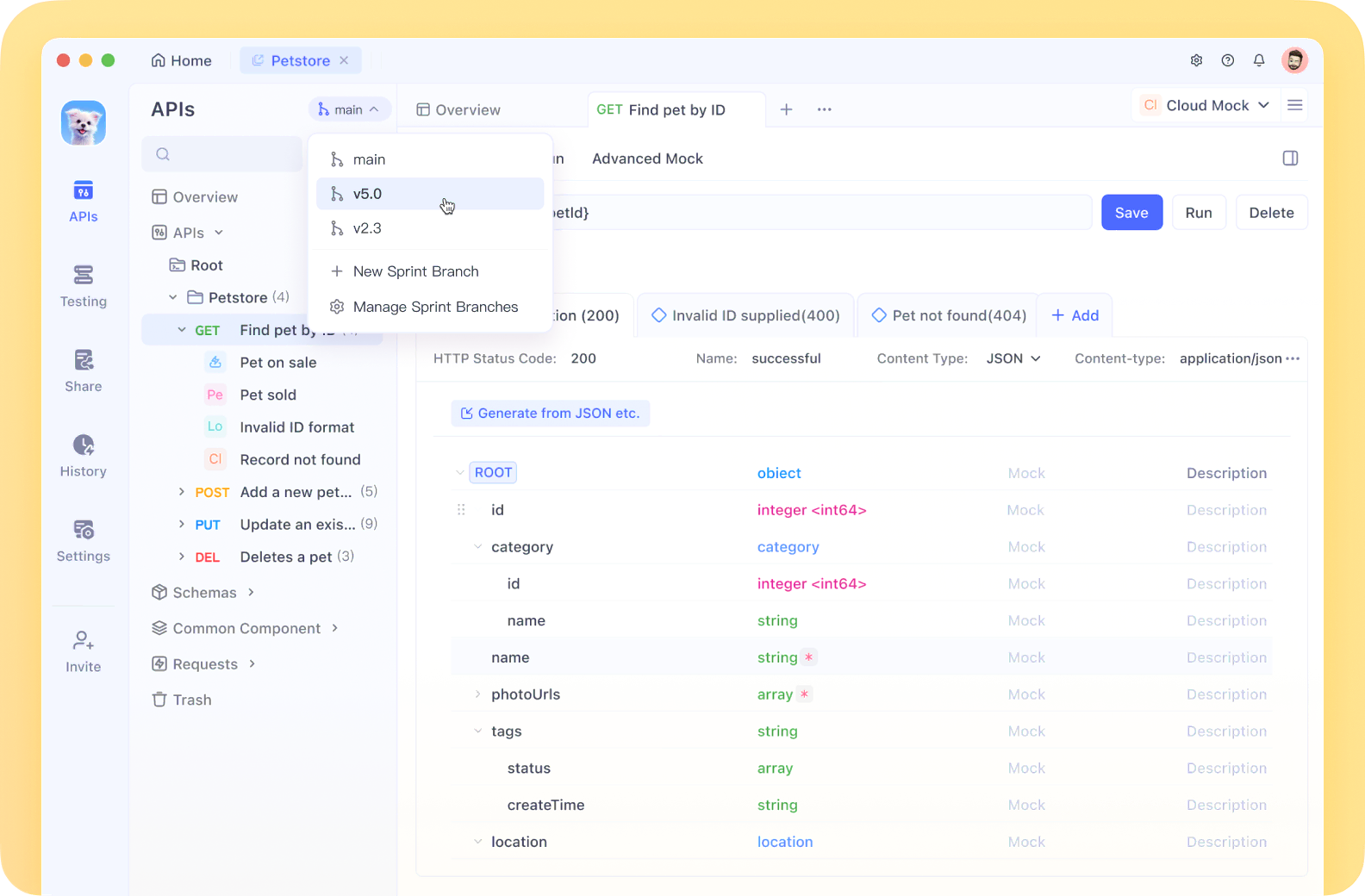
Security and Risks
With great power comes great responsibility, and Claude’s new Code Interpreter is no exception. Its network access is restricted, using proxies and allow lists to limit external connections, but there’s a small risk of prompt injection attacks. Malicious code or data in uploaded files or web content could potentially compromise security, so Anthropic advises monitoring conversations closely for unexpected behavior. They’re also proactively red-teaming and testing to mitigate risks. The 30MB file size limit helps reduce exposure, but users should stay vigilant, especially when handling sensitive data. These precautions ensure Claude’s new Code Interpreter remains a secure tool for most use cases.
User Experience and Accessibility
Using Claude’s new Code Interpreter is a breeze, but there are a few quirks. You can’t run the old Analysis Tool and the new interpreter simultaneously—toggling one on in settings (claude.ai/settings/features) disables the other. The rollout for Pro users is gradual, so some may get early access without notice. The interface integrates file manipulation smoothly, making it a productivity booster for advanced users. For Max, Team, and Enterprise users, the preview is already live, and the experience feels polished, with file uploads and code execution seamlessly woven into Claude’s chat interface.
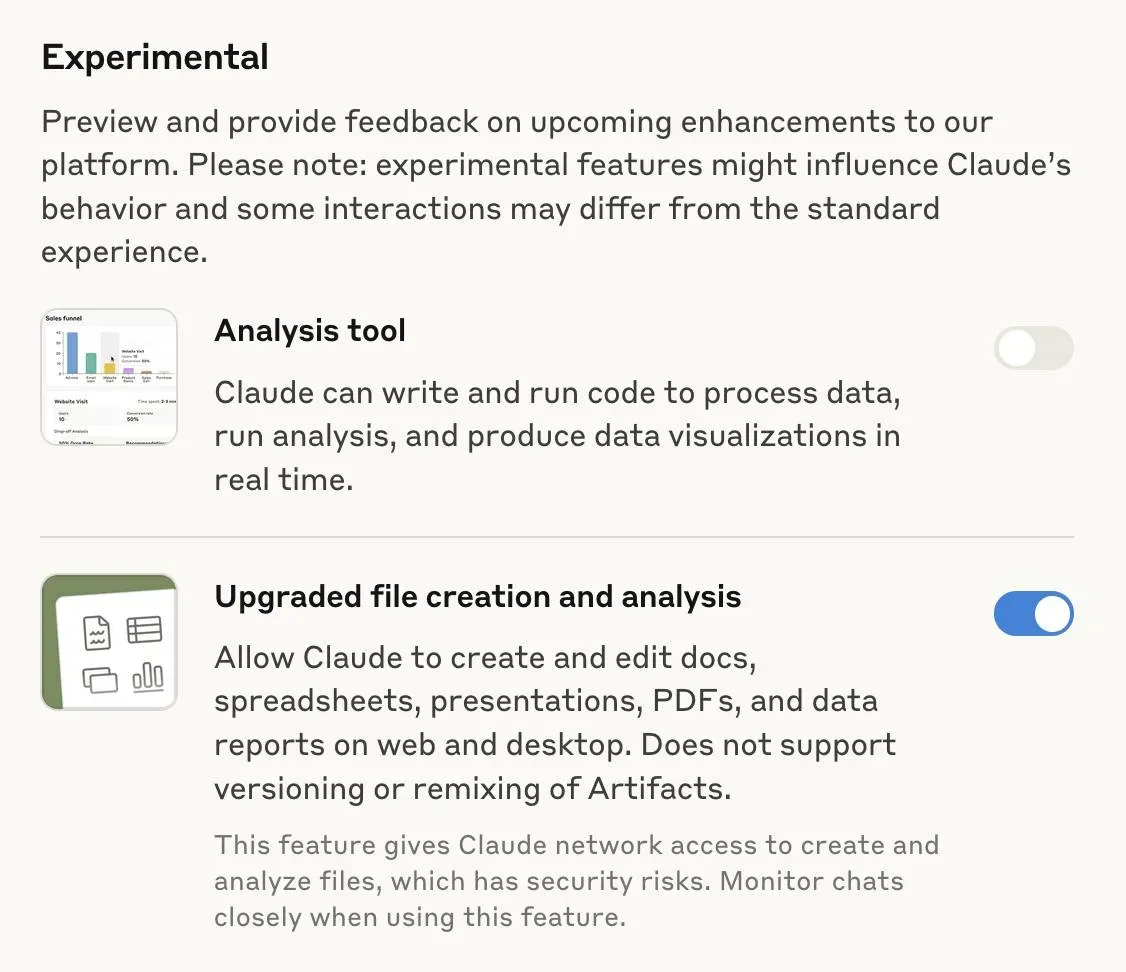
Comparative Perspective
How does Claude’s new Code Interpreter stack up against OpenAI’s ChatGPT Code Interpreter? They share similarities, like server-side code execution, but Claude stands out with Node.js pre-installed and on-demand Python package installation. However, its 30MB file size limit is tighter than ChatGPT’s 512MB, which could be a constraint for massive datasets. Claude’s restricted network access is safer but less flexible than ChatGPT’s broader internet connectivity. These trade-offs make Claude’s new Code Interpreter a strong contender, especially for Node.js fans or those needing custom packages.
Conclusion
Claude’s new Code Interpreter is a stellar update that elevates Claude to a top-tier tool for developers and data analysts. Its ability to create, edit, and analyze files, run Python and Node.js code, and install packages on the fly makes it a versatile addition to any workflow. Despite a confusing name (“Upgraded file creation and analysis” doesn’t exactly roll off the tongue), this feature reflects the growing sophistication of AI code interpreters. With community-driven dashboards, tools like Apidog for testing, and robust security measures, Claude’s new Code Interpreter is a must-try for anyone looking to streamline coding and data tasks. So, fire up Claude.ai, toggle on the interpreter, and start exploring its powerful capabilities today.
